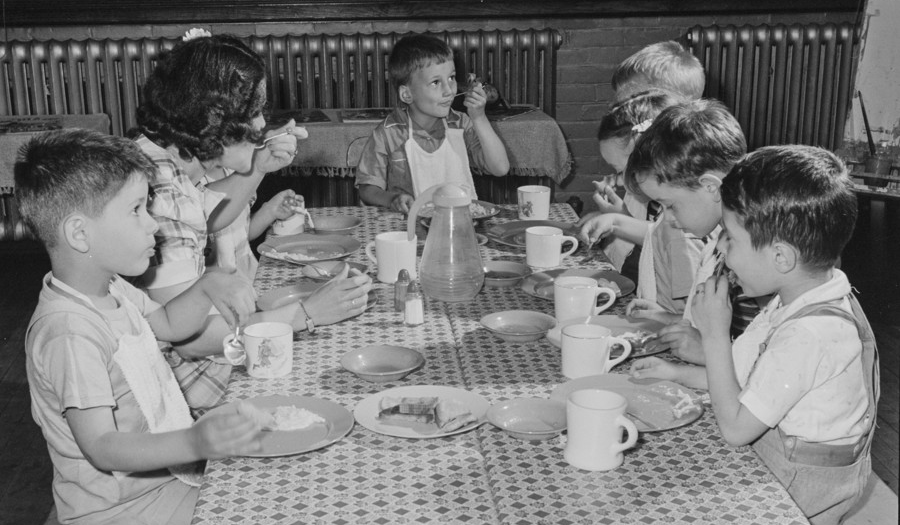The US Funded Universal Childcare During WWII

Excerpt from History.com
The U.S. Funded Universal Childcare During World War II—Then Stopped
By: Becky Little
Published: May 12, 2021
When the United States started recruiting women for World War II factory jobs, there was a reluctance to call stay-at-home mothers with young children into the workforce. That changed when the government realized it needed more wartime laborers in its factories. To allow more women to work, the government began subsidizing childcare for the first (and only) time in the nation’s history.
An estimated 550,000 to 600,000 children received care through these facilities, which cost parents around 50 to 75 cents per child, per day (in 2021, that’s less than $12). But like women’s employment in factories, the day care centers were always meant to be a temporary wartime measure. When the war ended, the government encouraged women to leave the factories and care for their children at home.
Before World War II, organized “day care” didn’t really exist in the United States. The children of middle- and upper-class families might go to private nursery schools for a few hours a day. (In German communities, five- and six-year-olds went to half-day Kindergartens.)
For children from poor families whose father had died or couldn’t work, there were day nurseries funded by charitable donations. But there were no affordable all-day childcare centers for families in which both parents worked—a situation that was common for low-income families and less common for middle- and upper-class families.
The war temporarily changed that. In 1940, the United States passed the Defense Housing and Community Facilities and Services Act, known as the Lanham Act, which gave the Federal Works Agency the authority to fund the construction of houses, schools and other infrastructure for laborers in the growing defense industry. It was not specifically meant to fund childcare, but in late 1942, the government used it to fund temporary day care centers for the children of mothers working wartime jobs.
Communities had to apply for funding to set up day care centers; once they did, there was very little federal involvement. Local organizers structured childcare centers around a community’s needs. Many offered care at odd hours to accommodate the schedules of women who had to work early in the morning or late at night. They also provided up to three meals a day for children, with some offering prepared meals for mothers to take with them when they picked up their kids.
For these centers, organizers enlisted architects to build attractive buildings that would cater to the needs of childcare, specifically. “There was a lot of publicity about those, but those were unusual. Most of the childcare centers were kind of makeshift. They were set up in [places like] church basements.”
As the war ended in August 1945, the Federal Works Agency announced it would stop funding childcare as soon as possible. Parents responded by sending the agency 1,155 letters, 318 wires, 794 postcards and petitions with 3,647 signatures urging the government to keep them open. In response, the U.S. government provided additional funding for childcare through February 1946. After that, it was over.

Explore our other Child Care Aware® of Missouri resources:
FREE Clock Hour Training
Scholarships for Educators
Child Care Health and Wellness
Family Child Care Network
Leadership Development Opportunities
Missouri Office of Childhood Updates
Show Me Child Care Resources
Support Child Care Aware® of Missouri
Community Data
Join Our Team
Resources to Build Your Business
.png?width=666&height=414&name=Child%20Care%20Aware%20Logo%20(1).png)